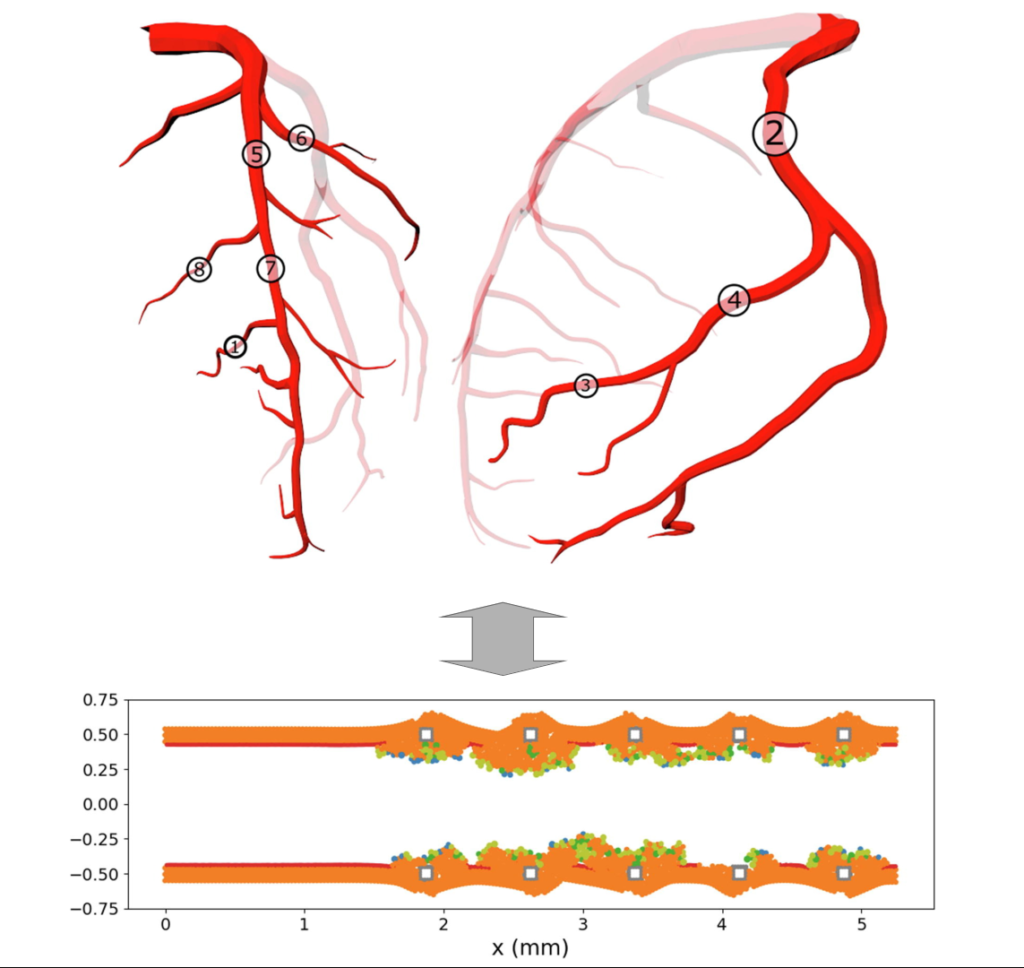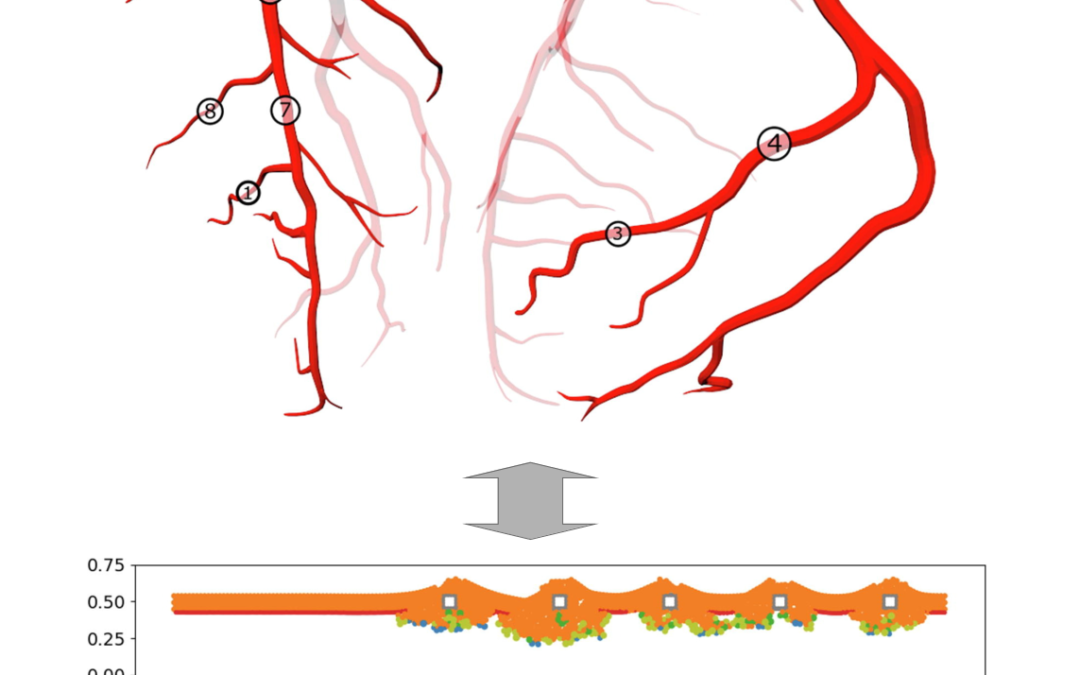
Pavel Zun, Andrey Svitenkov and Alfons Hoekstra have published a new paper on the effects of local coronary blood flow dynamics on the predictions of a model of in-stent restenosis.
Computational models are increasingly used to study cardiovascular disease. However, models of coronary vessel remodelling usually make some strong assumptions about the effects of a local narrowing on the flow through the narrowed vessel. Here, we test the effects of local flow dynamics on the predictions of an in-stent restenosis (ISR) model. A previously developed 2D model of ISR is coupled to a 1D model of coronary blood flow. Then, two different assumptions are tested. The first assumption is that the vasculature is always able to adapt, and the volumetric flow rate through the narrowed vessel is kept constant. The second, alternative, assumption is that the vasculature does not adapt at all, and the ratio of the pressure drop to the flow rate (hydrodynamic resistance) stays the same throughout the whole process for all vessels unaffected by the stenosis, and aortic or venous blood pressure does not change either. Then, the dynamics are compared for different locations in coronary tree for two different reendothelization scenarios. The assumptions of constant volumetric flow rate (absolute vascular adaptation) versus constant aortic pressure drop and no adaptation do not significantly affect the growth dynamics for most locations in the coronary tree, and the differences can only be observed at the locations where a strong alternative flow pathway is present. On the other hand, the difference between locations is significant, which is consistent with small vessel size being a risk factor for restenosis. These results suggest that the assumption of a constant flow is a good approximation for ISR models dealing with the typical progression of ISR in the most often stented locations such as the proximal parts of left anterior descending (LAD) and left circumflex (LCX) arteries.
For further details read here.

